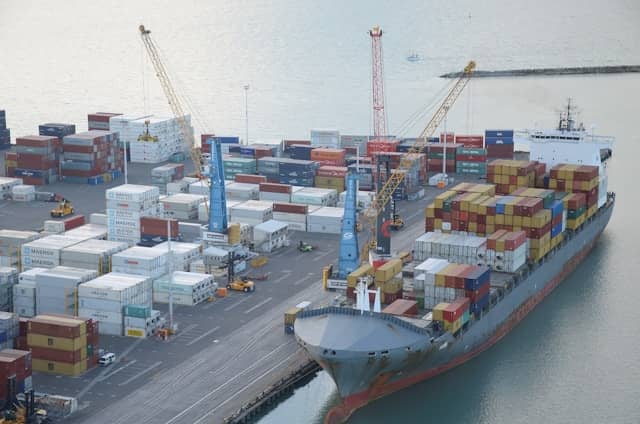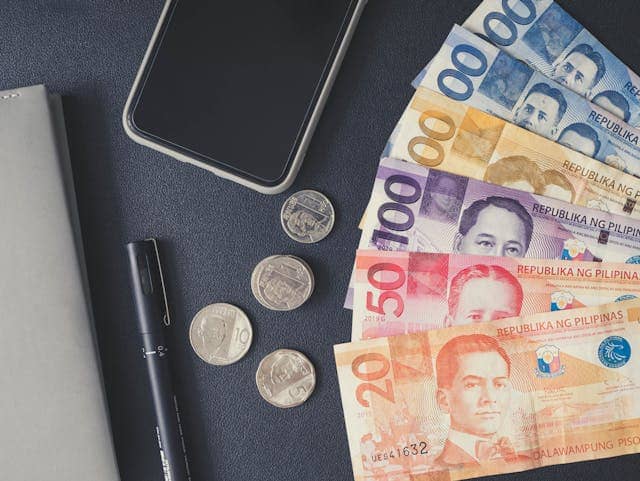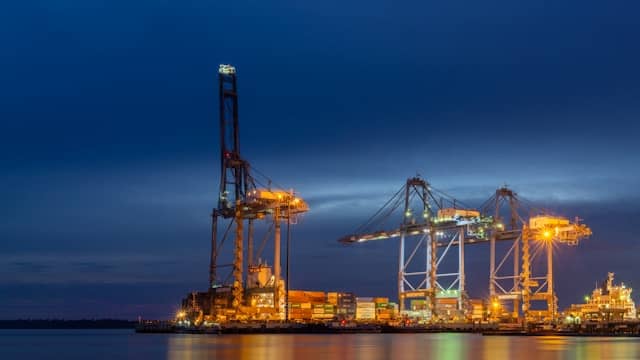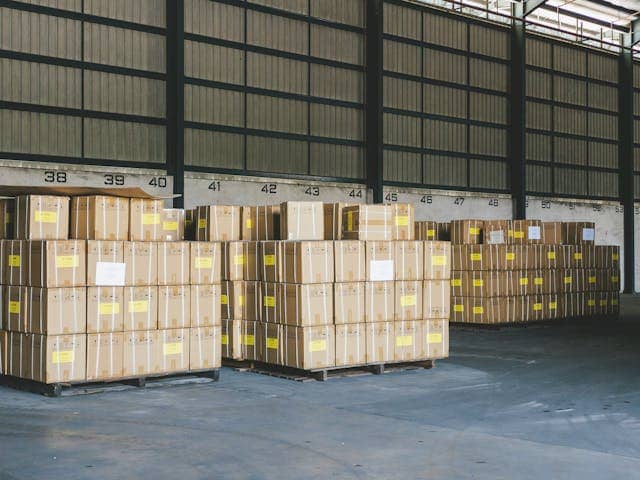Navigating the waters of international logistics can seem like a daunting task, especially when it comes to the flourishing trade between China and the Philippines.
Your ability to efficiently manage shipping between these two nations can significantly influence your eCommerce success.
As the global marketplace continues to expand, understanding the available shipping methods and their implications on cost and transit times is pivotal for a seamless operation.
This article aims to equip you with the necessary knowledge to make informed decisions regarding your shipments from China to the Philippines.
Whether you are a seasoned business owner or new to the import-export arena, an accurate grasp of customs procedures, documentation, and choosing a reliable freight forwarder will align you with the best practices in logistics, ensuring your products reach their destination effectively.

Understanding Shipping Methods: Sea, Air, and Express
When shipping from China to the Philippines, you have three main options: sea freight, air freight, and express shipping. Each of these methods offers different benefits regarding cost, speed, and cargo handling.
Sea Freight
Sea freight, sometimes referred to as ocean freight, is a cost-effective choice for transporting large volumes of goods.
If you’re not in a hurry and have a significant volume of products, sea freight from China to the Philippines can be your go-to option.
You can choose between Full Container Load (FCL) or Less Than Container Load (LCL) depending on the quantity of your cargo.
Pros
- Cost-effective for large shipments
- Can accommodate large volumes, including heavy or bulky items
Cons
- Slower than air or express shipping
- Can be affected by weather conditions and port delays
Top-Rated China Freight Forwarder
Expert Shipping Solutions for Your Needs
Air Freight
Air freight is faster than sea transport and is suitable for high-value, perishable, or time-sensitive consignments.
If you need your goods delivered swiftly, air freight from China to the Philippines is an efficient choice, offering you a balance between speed and cost, especially for smaller cargo.
Pros
- Very fast transit time
- Good for valuable or perishable items
Cons
- More expensive than sea freight
- Limited by air cargo weight and size restrictions
Express Shipping
Express shipping offers the fastest, often door-to-door, delivery service provided by carriers like FedEx, UPS, or DHL.
It’s the best choice for expedited delivery of smaller packages when time is of the essence.
Express shipping is the most efficient method for urgent shipments and is widely used for documents and small parcels.
Pros
- Quickest delivery option
- Provides detailed tracking and often door-to-door service
Cons
- Costliest method, especially for larger shipments
- Best suited only for small volume shipments
Key Chinese and Philippine Ports and Airports

When you’re looking into shipping from China to the Philippines, it’s crucial to know the major ports and airports that handle most of the trade between these countries.
Chinese Ports
- Shenzhen: One of the busiest and fastest-growing ports in the world. It specializes in electronics and is conveniently located near Hong Kong.
- Shanghai: The world’s largest port in terms of cargo tonnage, ideal for a variety of goods.
- Ningbo: A top-tier port with state-of-the-art facilities, important for bulk and container shipping.
Philippine Ports
- Manila: The Port of Manila is the premier international shipping gateway to the country, handling over 75 million tons of cargo annually.
- Cebu: Acts as a major trade hub in the Visayas region, perfect for inter-island distribution.
- Batangas and Davao: These ports serve as significant auxiliary entry points, facilitating a smoother flow of goods.
Airports
- Hong Kong International Airport: A major hub close to Shenzhen known for its impressive cargo handling capacity.
- Ninoy Aquino International Airport (Manila): The main gateway by air into the Philippines. It’s well-equipped to handle diverse cargo needs.
Shipping and Logistics Costs
Before diving into the specifics of shipping costs from China to the Philippines, it’s crucial to understand the various factors that influence these expenses and how to derive estimates for your consignments.
Factors Influencing Shipping Costs
The cost of shipping goods from China to the Philippines can vary widely based on several factors.
The weight and volume of your shipment are significant determinants, as they affect the type of shipping container that will be utilized.
Packing needs can also influence costs, especially if your items require special handling or materials for safe transportation.
Incoterms such as FOB (Free On Board) and CIF (Cost, Insurance, and Freight) play critical roles in understanding who shoulders which costs.
With FOB, you’re responsible for the shipping costs once the goods leave the port of origin. In contrast, CIF terms mean that the seller covers the voyage up until the goods reach your port.
You’ll need to account for customs duty, import tariffs, duties and taxes, and the customs value of your goods. The cost-effective choice often depends on balancing these fees with your logistics services’ speed and reliability.

Pricing Estimates
When budgeting for shipments, consider both cost factors and service quality. Here is a simplified comparison to help you estimate:
| Method | Price |
| Air Freight | $1-$5 per kg |
| Sea Freight (LCL) | $50-$130 per CBM |
| Sea Freight (20ft FCL) | $350-$450 |
| Sea Freight (40ft FCL) | $500-$650 |
| Express Shipping | $5-$8 per kg |
To determine specific pricing, it’s advised to use tools or consult services specializing in shipping costs.
Reliable freight forwarders or shipping companies can provide current estimates based on your shipment’s details and the prevailing conditions like fuel prices or international trade policies.
Remember, shipping costs can fluctuate with seasonality and market shifts, so be sure to request updated quotes for each shipment.
Transit Times from China to Philippines
When you’re looking to ship goods from China to the Philippines, the transit times can vary based on a number of factors. Understanding these times will help you plan better and meet your shipping needs efficiently.
Factors Influencing Transit Schedules
Shipping Method
- Express Shipping: Typically, it takes about 2 to 3 days for goods to reach the Philippines. This mode is faster because it’s often a door-to-door service.
- Air Freight: When choosing air freight, your goods will usually be delivered within 3 to 5 days.
- Sea Freight: This method can take anywhere from 7 to 22 days, depending on whether you’re using FCL (Full Container Load) or LCL (Less Than Container Load). FCL is quicker as it doesn’t require consolidation, which can take extra time.
Other Influential Factors
Customs processes, bad weather, port efficiency, and unexpected geopolitical events can either delay or expedite your shipments.
Shippers can plan by staying updated on these factors and by choosing the right shipping method according to their schedules.

Shipping Schedules and Efficiency
Regular shipping schedules and the efficiency of the ports in China and the Philippines play a significant role.
Ports like Nansha in China to Subic Bay in the Philippines, for example, have regular shipments that can take roughly 1 day and 12 hours.
Shippers should regularly consult these schedules, as services can vary from weekly to bi-weekly.
Planning and Mitigation
To mitigate potential delays, you can plan your shipping during periods known to have less congestion, maintain good communication with shipping agents, and factor in some buffer time for unforeseen delays.
Here is a summary table for an at-a-glance view of the transit times by shipping method:
| Shipping Method | Average Transit Time | Notes |
| Express Shipping | 2-3 days | Fastest, door-to-door |
| Air Freight | 3-5 days | Fast, suitable for urgent needs |
| Sea Freight | 7-22 days | Duration depends on FCL or LCL, slower but cost-effective |
Remember to check the latest schedules and stay informed about factors that may affect transit times to ensure smooth delivery of your goods from China to the Philippines.
When you’re shipping from China to the Philippines, understanding the customs clearance process is crucial. Here’s a quick guide to help you navigate through it with ease:
- Customs Broker: Hiring a customs broker can be a smart move as they’re experts in the Philippine import process. They’ll help ensure your documents are in order and can facilitate smoother clearance through customs.
- Documents: You’ll need to prepare certain documents such as:
- Commercial Invoice: This outlines the sale transaction and includes information on the product quantities and value.
- Packing List: Details everything that’s in your shipment, including weight and packaging type.
- Bill of Lading or Airway Bill: Serves as a contract between you and the carrier and receipt of your goods.
- Certificate of Origin: Sometimes referred to as the CO, this document verifies the products in your shipment were manufactured in China.
- Permit and Licenses: For certain goods, you might need a special import license, permit, or other certifications from Philippine government agencies.
- VAT and Import Duty: Be aware that your goods will be subject to Value-Added Tax (VAT) and possibly import duty, depending on their value and type.
- Letter of Credit: Often used in international trade, this document from the bank guarantees the seller will receive payment under specific conditions.
Visit the Bureau of Customs official website for updates on regulations and procedures to keep your import process hassle-free. Remember, keeping your paperwork complete and accurate is key to avoiding delays and additional costs.

How to Choose the Right Freight Forwarder
1. Identify Your Needs.
Clearly define the cargo type and services you need. Whether it’s full container loads or less-than-container loads, you want a forwarder that handles your specific requirements, including pick up, warehousing and distribution, and cargo insurance.
2. Research Their Reputation.
When shipping from China to the Philippines, look for freight forwarders with a solid reputation. Read customer reviews and check their track record in managing shipments to your destination.
3. Assess Their Expertise.
Choose a freight forwarder that specializes in the China-Philippines trade route. Their knowledge of local regulations and relationships with shipping companies can facilitate smoother transactions. Experts emphasize the value of a forwarder’s local expertise.
4. Check Technological Capabilities.
An efficient forwarder uses technology to offer accurate shipment tracking and reduce paperwork. Find a tech-savvy forwarder can provide quicker response times and a competitive edge.
5. Evaluate Their Network.
The scope and quality of a freight forwarder’s network can impact your shipment. A well-connected forwarder with various industry links can offer flexibility and reliability in freight forwarding.
6. Compare and Contrast.
Get quotes from several forwarders. Compare their prices, services, and the value they offer for your particular shipping needs. Remember, the cheapest option is not always the best.
Top-Rated China Freight Forwarder
Expert Shipping Solutions for Your Needs
FAQs about Shipping from China to Philippines
Below are some of the most common queries that can help guide you through the process of shipping goods from China to the Philippines.
What Is the Import Duty Rate in the Philippines?
In the Philippines, the import duty rate can vary widely, from 0% to 65%, depending on the type of goods you are importing.
Electronics, for instance, may be taxed differently from clothing. It’s important to consult with the Bureau of Customs or a freight forwarder to get the specific duty rate for your products.
How Long Does Philippine Customs Clearance Take?
The customs clearance process in the Philippines can take anywhere from a few days to a week.
This timeframe depends on the completeness and accuracy of your shipment’s documentation.
To ensure a swift process, make sure all your paperwork is correct and submitted on time.
What Is Not Allowed to Be Shipped to the Philippines?
Certain items are prohibited from being shipped to the Philippines. These include firearms and ammunition, illicit drugs, pornography, and pirated materials, among others.
Always verify the latest customs regulations to avoid shipping something that could get your shipment confiscated or lead to legal trouble.
Wrapping Up: Efficient Shipping from China to the Philippines
Shipping goods from China to the Philippines efficiently requires a keen understanding of various logistics options. Whether opting for air freight for rapid delivery or sea freight for cost-effectiveness, the key is to align your choice with business needs.
Shipping Methods: You can choose from multiple shipping methods, including air freight, which is faster, or sea freight with options like container or less-than-container load, each suiting different scales of shipping demands.
Shipping Times: Shipping times can range from around 2-3 days by air to 7-13 days by sea—planning according to the urgency of your cargo’s arrival is crucial.
Remember, successful shipping also includes dealing with customs clearance, documentation, and local transportation within the Philippines, sometimes requiring professional assistance from a shipping agent.
If you’re looking to streamline the process of sourcing quality products from China for your Filipino customers, and facilitate smooth shipping to the Philippines, consider reaching out for a quick quote.
To further enhance your shipping experience, consider our freight forwarding services. We offer end-to-end logistics support, managing everything from pickup at the Chinese supplier to final delivery in the Philippines.
For a tailored logistics plan that covers all aspects of your China-to-Philippines shipping needs, request a freight forwarding quote today.

